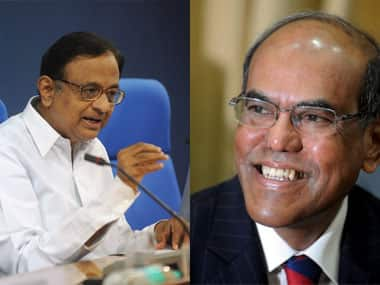The latest Purchasing Managers’ Index (PMI) figure, a key indicator of the state of the manufacturing sector, has come in at a 50-month low, falling to just 50.1 in May from 51 the previous month. This is just one more indication of the rot Indian manufacturing finds itself in, with little immediate solution in sight. Worse, output actually fell for the first time since March 2009.
Not surprisingly, this latest piece of dismal news, together with last week’s announcement of the FY13 growth figure of just 5 percent, has once again put the ball squarely in the court of those clamoring for another rate cut when RBI meets to review its monetary policy on 17 June. Rate cuts, it appears, are seen as the only solution.
[caption id=“attachment_836495” align=“alignleft” width=“380”] PMI falls to 50-month low in May, production falls for the first time since March 2009. Expectedly, the clamor is for yet another rate cut[/caption]
PMI falls to 50-month low in May, production falls for the first time since March 2009. Expectedly, the clamor is for yet another rate cut[/caption]
Consider some of the key pointers from the May HSBC-Markit PMI number. Production has fallen for the first time since March 2009 and growth in new orders is at its weakest point in the past 50-month expansionary sequence. The only bright spot seems to be that export orders expanded at their fastest clip since January.
There was a divergence noticed between input and output prices. Input prices rose, but output prices were lowered for the first time in four years.
To be sure, the problem is much wider than just a manufacturing slowdown. Last week’s GDP figures show that the slowdown is widespread. As a report from broking firm Motilal Oswal points out, agriculture slowed on expected lines at just 1.9 percent owing to the failure of both kharif and rabi season monsoon. Industrial growth at 2.1 percent was the lowest in 11 years and services growth at 7.1 percent the lowest in a decade. On the other hand, demand growth was the weakest in 21 years.
As argued earlier in Firstpost, unlike what India Inc seems to think, given the breadth and depth of the slowdown, the answers will have to lie with the government than merely through continuing rate cuts by the central bank, though that will doubtless be the immediate reaction from Corporate India.
While the monsoon this year is expected to be normal, the government will have to pull out all stops to ensure there is a recovery in investment activity together with any monetary easing by RBI. On the central bank’s front, RBI governor Duvvuri Subbarao has made it clear that the specter of inflation refuses to go away and there’s enough upside risk thanks to the huge current account deficit (CAD).
There are enough headwinds which suggest that RBI alone - despite its three rate cuts since the beginning of 2013 – won’t be able to address the problem unless the government supplements those efforts. Kotak Mahindra Bank, for instance, points to the three structural factors which will hang heavy: the higher-than-comforting CAD and fiscal gaps that reduce the scope of policy impetus to growth; the lower savings and leakage into gold implying lower future growth potential, and energy constraints in the economy and policy impediments on harnessing natural resources.
“With trade as an engine of growth failing worldwide and with likely removal of QE, overall growth in the rest of the world is likely to remain muted. In this context, it could be some time before the private investment cycle picks up,” the bank argues in a recent report. Government finances would, on the other hand, remain restrictive in kick-starting investment demand, it adds.
For now, however, once again it is Subbarao who is going to be expected to pull something out of his hat, a role the RBI governor seems to be getting quite used to. Those like Motilal Oswal feel that with inflation showing definite signs of moderation, RBI can be expected to ease rates by another 50 bps in the coming days.
The question which few are asking right now is, will that be enough? Both Subbarao and Finance Minister Palaniappan Chidambaram know the answer to that one.
Sourav Majumdar has been a financial journalist for over 18 years. He has worked with leading business newspapers and covered the corporate sector and financial markets. He is based in Mumbai.
)